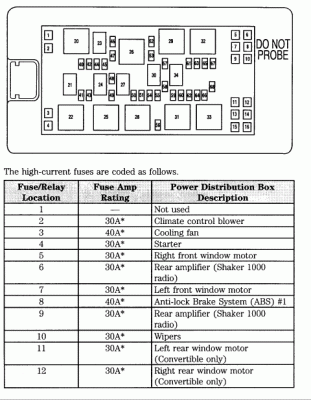46addict
13726548
Wish I had found this earlier as I have some questions for you, if you're still around. Or maybe someone else can answer if they know.I have this sorted out. This is a long read, but might help someone in the future.
I had to replace my radiator because I accidentally used a bolt that was too long to hold the fan shroud to the radiator. In doing so, I drove said screw through the left side tank. I had initially thought that my high coolant temp issue arrived with the radiator change. Further scrutinisation of my data logs prior to the radiator replacement proved that wrong. So I started digging into why the new engine build was running about 30 degrees hotter than the original setup.
First of all, the list of things I tried:
Replaced the thermostat (no change)
Sped up the water pump by putting a smaller drive pulley on it (no change)
Put vacuum on the cooling system in an effort to ensure I don't have a pocket of air somewhere (no change)
Replaced the cylinder head temp sensor (no change)
From here I decided to install an electric coolant temp gauge. I put the sender in the coolant crossover on the engine side of the thermostat so I got a true engine temperature reading regardless of thermostat position. I was able to confirm that I had about a 30 degree temperature delta between actual coolant temperature and reported coolant temp at the ECU.
Some quick background information:
As you may (or may not know), the ECU uses a cylinder head temperature sender (CHT) rather than a conventional coolant temp sensor. The calculations in the tune are based on coolant temperature data but this coolant temp is an inferred value based from the CHT sensor input.
I milled 0.040" off my cylinder heads to arrive at a specific combustion chamber volume. In doing that, it moves the CHT sensor closer to the deck surface. I have a larger than stock bore diameter as well, so more surface area of the bottom of the head is exposed to the combustion heat. There is also less mass around the CHT sensor to pull heat away. So the net in all of this is that the CHT sensor was reporting data to the ECU that in turn was converting to coolant temps that ran around 215 degrees in cruise condition and north of 230 degrees under load.
The CHT data is not wrong. The cylinder head is in fact running hotter but since there is no actual coolant temp sensor, the reported coolant temp goes up as well. I'm running a high compression, large bore engine so it is logical that there would be more heat rejection. Anyway, there are many scalars and offsets based on coolant temp. As you can imagine, 230 degree coolant temp is where the ECU starts going into "protect myself" mode. Rather than go through all the tables that relate to coolant temp and change the values to say 230 degrees was ok, I decided to offset the resistance value of the CHT sensor.
I put the CHT sensor in water and measured the resistance across the pins ever 5 degrees from ~80 to boiling. This creates a temperature to resistance curve that can be plotted in Excel. From there, you can use an exponential curve fit in Excel to extrapolate data beyond measured data. Temperature measuring sensors typically have inverted curves, meaning that as the temperature goes up, the resistance goes down. After studying my resistance curve, I determined that a 1K resistor should give me an appropriate offset value. I cut one of the 2 wires for the CHT sensor and added the 1K resistor in series.
Subsequent testing this morning has proven that my estimation is pretty close. I'm reading about 6 degrees cooler at the ECU than at the actual gauge. That's close enough for me so I don't plan on further refining anything.
So, for the vast majority of the 3V world, this will never be an issue as most don't build big bore engines. But for anyone that is running a big bore engine with milled heads and a lot of compression, this may be something to keep in mind if you have high coolant temp issues.
CSR
1) Did you replace the radiator with another stock replacement? What is your compression on the new setup and how much is too much for the stock radiator? The 215-225* range you mentioned is not abnormal so I would think the stock radiator is just fine for elevated compression.
2) You mentioned milled heads and it sounds like a lot of material was taken off. Did you have any fitment issues with the intake manifold? Or are you running a custom manifold?
And has anyone bothered to do the head cooling mod? Seems like a popular mod in the 4v world and I've seen a few 3v guys do it too. I may do mine if/when the engine is out.



